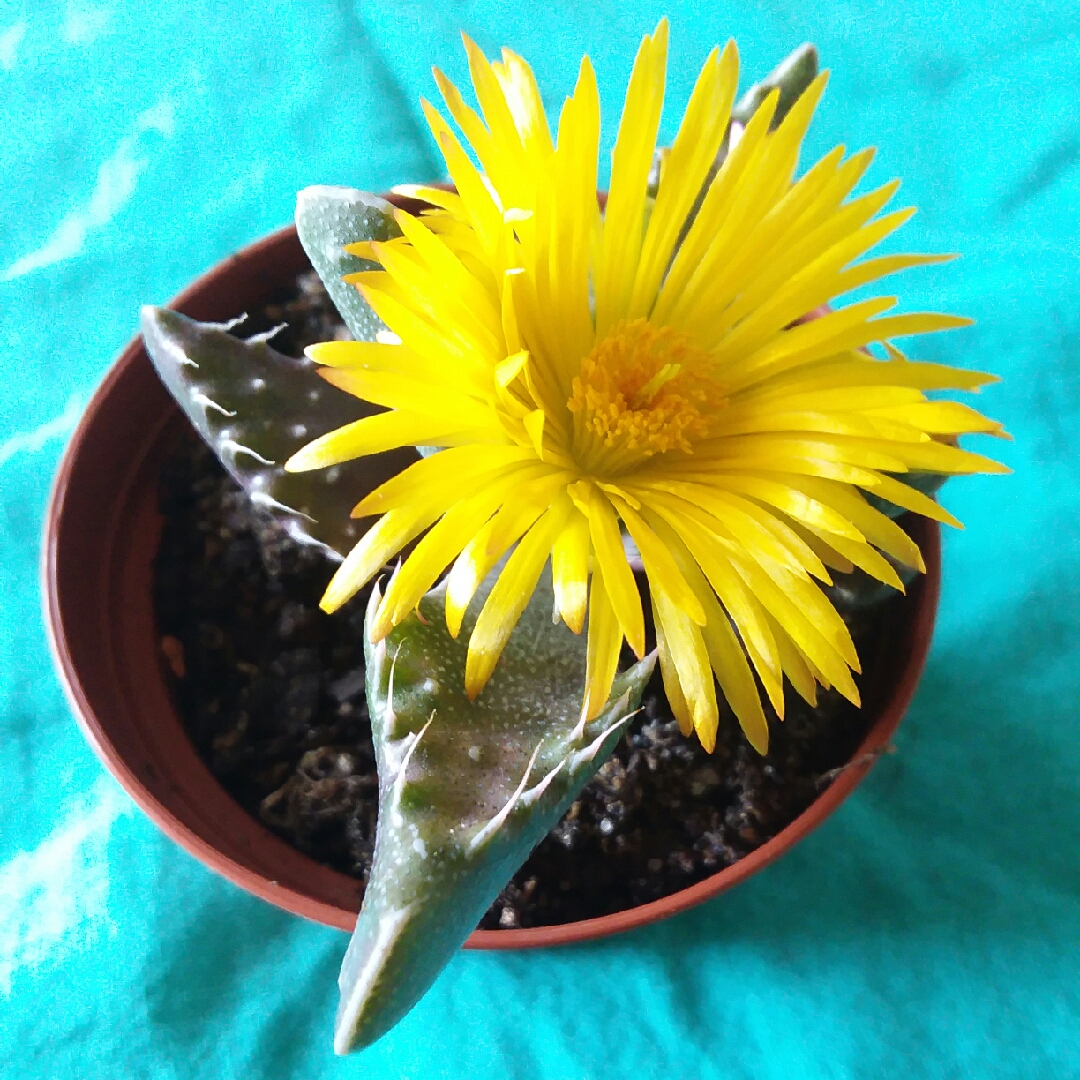
Faucaria tigrina
Tiger Jaws
Faucaria tigrina has a clumping habit and blooms in autumn with yellow flowers. It is a South African native succulent. They are small plants which form clumps of stemless rosettes of thick triangular or semi-circular leaves, light green in color, turning purple in the event of strong sunshine.
-
Full sun to partial shade
-
Very little water
-
Not Frost hardy
-
Light and free draining
Common name
Tiger Jaws
Latin name
Faucaria tigrina
type
Succulent
family
Aizoaceae
ph
5.0 - 7.5 Acid - Neutral
Plant & bloom calendar
-
Best time to plant
full grown dimensions
 0.08 M
0.10 M
0.08 M
0.10 M
Faucaria tigrina
Faucaria tigrina has a clumping habit and blooms in autumn with yellow flowers. It is a South African native succulent. They are small plants which form clumps of stemless rosettes of thick triangular or semi-circular leaves, light green in color, turning purple in the event of strong sunshine.
Planting
From Early Spring TO Early Spring
Succulents need good draining soil. When planting in the garden, make sure the area drains well and is not in a hollow that remains wet. Specially prepared cactus soil can be purchased for planting in pots or incorporate sand, gravel or volcanic rock for better drainage. The container you are planting in should have a drainage hole and it is wise to put crushed rock at the bottom before your planting medium.
Propagation
From Early Spring TO Late Winter
The most common form of propagation for succulents is called vegetative propagation. This involves cuttings, where several inches of stem with leaves are cut, allowed some time to heal and after healing produce a callus. After a week or so, roots should grow. Another method is division which involves uprooting an overgrown clump and pulling the stems and roots apart. The easiest method is to allow the formation of a callus from a leaf or segment.



























